An Exurbanite’s Guide to Field Crops
A drive-by primer on what’s growing in Headwaters.
If you’re an exurbanite who is keen to immerse yourself in rural culture, but don’t know what to say to your farmer neighbour after you’ve established it looks like rain, read on. This handy guide to common field crops grown in Headwaters won’t make you an expert, but it might help you feel a little more at home.
 Canola
Canola
Canola is a made-in-Canada success story – and its name tells the tale. The word canola comes from pairing “Canada” and “ola,” which derives from“ola,” for “oil low acid.”
Canola’s story in Canada begins during World War II, with the unfortunately named rapeseed, a word that comes from rapum, Latin for “turnip.” Like turnip, rapeseed is closely related to rutabagas, cabbages and cauliflower.
Until the war, rapeseed was not grown extensively in Canada, but with lubricating oil in short supply, Canadian farmers answered the call to grow rapeseed, which was crushed to make the oil desperately needed to lubricate the steam engines that powered ships and trains at the time.
But scientists and nutritionists also knew rapeseed oil was highly nutritious and could be used for cooking, though it had drawbacks. Taste was one of them. So over the next decades, Canadian scientists experimented and bred a variety of rapeseed that makes a tasty, nutritionally superior and heart-healthy oil. Once the oil is extracted from the harvested crop, the remaining meal can be used as high-quality animal feed. To distinguish this new variety, the name canola was trademarked in 1978.
Canola farmers typically test their soil every year to determine the amount and strength of fertilizer needed. The fertilizer is applied in early spring before the ground is seeded in April or May. With warm soil, the seeds germinate in about a week. Canola seedlings can tolerate frost to −7 C, so the crop usually survives cold spring nights.
The primary leaves split apart, and at this point the farmer hopes there won’t be too much rain as this can cause the crop to lose its vigour and potentially create a need to reseed.
Brilliant yellow flowers bloom in June or July and remain in flower for about a month. Mustard looks similar, but with the abundance of canola grown in Dufferin, Peel and Wellington, novice crop spotters can be fairly confident it’s canola they’re looking at.
When the flowers fall off, the pods are left. Each pod contains about 20 seeds which turn black as the pods lengthen. “In September, when the tiny seeds are black and dry, the crop is harvested,” says Meghan Moran, canola and edible bean specialist at the Ontario Ministry of Agriculture, Food and Rural Affairs.
The crop should have a maximum moisture level of 8 per cent, so it is left in the field to dry for 10 to 14 days, then tested to determine its moisture content. Too much moisture may lead to mould, fungus or, worst of all, fire: damp, decomposing vegetation generates temperatures that can rise until they’re hot enough to ignite.
“The seeds are 41 per cent oil and are crushed to extract the oil,” says Moran. The leftover meal is used as animal feed, particularly popular with dairy farmers, but it is also fodder for chickens and swine.
Canola oil is used in food and for frying. The oil is heat stable, so it doesn’t smoke when food is fried at high heat. It also has a relatively long shelf life.
Ontario oil is shipped all over the world. “When shipped to the U.S. it comes back as products; for instance, mayonnaise and potato chips,” says Moran.
Moran notes that crops are threatened by the tiny swede midge, a pest first reported on Ontario canola in 2003. “Adults emerge from the soil around June 1 and lay eggs on the canola plants,” she says. “The larvae eat the plant and prevent it from growing.” Canola producers must carefully monitor their crops to prevent damage.
2020 canola harvest (acres)
Dufferin 1,585
Wellington 1,783
Peel * NA
Ontario 32,100
* NA – Crop statistics are not available because size of crop is negligible.
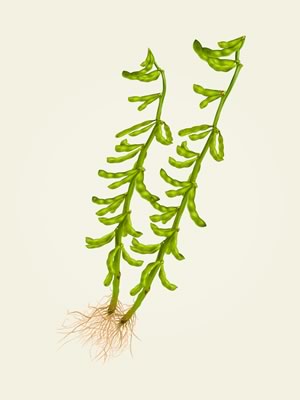 Soybeans
Soybeans
Native to Asia and brought to Canada in the 1800s, soybeans require long, warm summers to flourish. Although southern Ontario used to grow nearly all Canada’s soybeans, early-maturing varieties developed over the past 20 years have expanded crop production into more northerly areas of the province and beyond.
After the fall harvest, the soil is tested to determine which nutrients need to be replenished with fertilizer. Soybeans are usually planted near the end of the first week of May. Seeds are the size of peas and germinate in about a week. During the first few weeks, the plants require a great deal of weed control to get them past the critical period when nutrition-grabbing weeds may limit the yield of beans. Weed control is done mechanically with tractor and tiller and, depending on the conditions and practices of the farmers, may also involve chemical control.
As the plant grows and reaches a foot in height – by about mid-June – its broad leaves turn dark green. The plants flower in early July with white or purple self-pollinating flowers. The blooms are under the leaf canopy, so you won’t see them from the roadside.
“Each flower produces a bean pod,” says Brianne Curtis, who helps work the family farm in East Garafraxa and is a communications co-ordinator with Grain Farmers of Ontario. “In the fall, by harvest, the plants have dropped all their leaves, turn brown, and look like sticks in the field,” she says. “People ask why we have sticks in the field, but when people see that, they’re really seeing a mature plant ready for harvest.”
The beans are harvested in mid- to late September with a combine, a large machine that threshes, or separates, the seed from the stem and collects it in a hopper for transfer to a truck.
Soybeans are a mix of oil and protein. The oil may be used in the making of mayonnaise, soy milk, candles and plastics. The meal – what’s left after the oil has been squeezed from the beans – is used for farm animal feed.
2020 soybean harvest (acres)
Dufferin 30,775
Peel 24,999
Wellington 92,923
Ontario 2,833,300
Potatoes
Potatoes are Canada’s most popular vegetable, according to a 2020 Leger marketing poll. And Dufferin County’s high elevation, abundance of sandy loam soil, warm summer days and cool nights provide just the right conditions for growing this nutritious and versatile tuber. But Dufferin’s contribution to the Ontario potato harvest pales in comparison to that of neighbouring Simcoe County, where growers planted more than 15,000 acres of potatoes last year. No wonder Alliston bills itself as the spud capital of the province.
Prince Edward Island is, of course, the number 1 potato-producing province in Canada, with a potato industry that generates more than $1 billion a year. Island farmers, however, must ship their potatoes to markets across the country and around the world. Ontario potato growers routinely sell theirs within 200 miles of where the crop is grown.
Some potatoes are planted in spring and harvested in fall, but “early” potatoes are planted in the fall to be harvested in spring. Statistics Canada shows that, in 2020, Ontario potato production rose by more than a million hundredweight over the previous year, an increase of more than 12 per cent.
Members of the nightshade, or Solanaceae, family, along with peppers, tomatoes and eggplants, potatoes send out underground stems, or stolons, that swell and are, technically, tubers. Above ground, the leafy plants grow one to three feet high and develop small, white, yellow or purple flowers.
Common varieties are Yukon gold, developed at the University of Guelph as an all-purpose potato, Kennebec, and Superior, a large, long white potato popular for making french fries. Once harvested, potatoes are best stored in a dark, dry place because light turns them green. The green areas contain a neurotoxin that may, if eaten, cause illness and even death. Children are especially susceptible because of their smaller size. Green spots should be excised and thrown out – or planted in the garden.
Potatoes are a source of vitamins B1, B3, B6 and C, as well as riboflavin, pantothenic acid, folate and minerals such as potassium, phosphorus and magnesium. Low in fat, these tubers also contain iron and are a good source of dietary fibre. The high carbohydrate content of potatoes is a drawback for some people, although many others embrace carbs as a good source of energy. As a result of its all-round nutritional value, the lowly spud has maintained its position as a Canadian dietary staple.
2020 planted potato crop (acres)
Dufferin 4,193
Peel 69
Wellington 69
Ontario 36,500
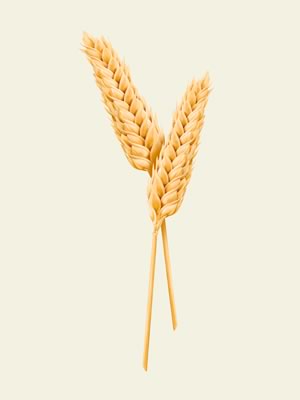 Wheat
Wheat
The tight seed heads and stalks of this cereal crop are most spectacular at harvest time when they turn a stunning golden colour. Although most of the country’s wheat is grown in Saskatchewan, Ontario is also a significant producer.
Most wheat grown in Ontario is winter wheat, which is planted in the fall and harvested the next summer, while most wheat grown on the Prairies is spring wheat, planted in spring and harvested the same year. Both “hard” wheat, with its higher gluten content, and “soft” wheat, which has more starch and less gluten, can be grown as either winter or spring wheat. In addition, both hard and soft wheats can be either “red” (a reddish bronze) or “white” (a light golden colour).
Soft white wheat is used almost exclusively for cake and pastry flour, while all-purpose flour is a mix of hard and soft wheats. Bread flour can milled from either hard red or hard white wheat, though hard red makes for sturdier loaves. Hard white is used for softer breads, such as dinner rolls. Durum wheat, used to create semolina for pasta products and grown mostly on the Prairies, is a variety of hard spring wheat.
2020 winter wheat harvest (acres)
Dufferin 18,372
Peel 10,790
Wellington 60,806
Ontario 1,035,100
 Oats
Oats
Canada is the world’s largest exporter of oats, according to Statistics Canada, and Ontario oats comprise about 28 per cent of those exports. About 64 per cent of Ontario oats, however, stay in the province to be used as horse feed and pet food, as well as in cereals and cereal bars. Oats grown in Dufferin and Wellington account for a little under 9 per cent of Ontario’s oat crop. Peel Region’s oat crop is negligible.
Oats were traditionally grown in Ontario as a feed crop, mostly for horses. But production of milling oats, a high-quality oat for human consumption, is rising with the popularity of plant-based food options. Farmtario reports, for example, that in the past two years, sales of oat-based, dairy-alternative drinks have increased nearly 250 per cent in Canada. Oat-based products, such as oat ice cream, appeal to those with dairy allergies or sensitivities, as well as a growing vegan population. And because oats contain no gluten, they are also popular with people with gluten sensitivities. (Look for “gluten-free” on food labels. If oats are milled in the same facility as grains that do contain gluten, cross-contamination may occur.)
Like other cereal grains, oats prefer cooler weather and are sensitive to high temperatures, so farmers tend to plant the seed in early spring. Indeed, oats are one of the first spring grains planted. The crop is ready to harvest about five or six months later.
Because most oats are eaten as a whole grain, the milling process is different from that of wheat, which is ground to make flour. For oats, a three-step milling process involves cleaning; hulling, which removes the hard outer shell and leaves the kernel, or groat; and kilning, which heats and preserves the oats.
Ripe oats are not the rich golden colour of wheat. And unlike wheat, with its upright spikes, the seeds of oats hang loosely from delicate hair-like strands at the top of the stalk.
2020 oat harvest (acres)
Dufferin 3,990
Wellington 3,750
Peel * NA
Ontario 92,700
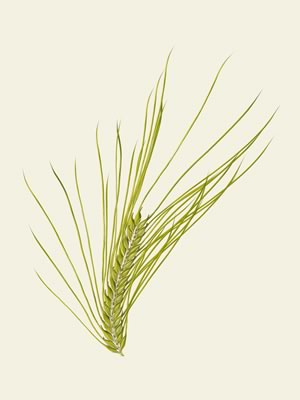 Barley
Barley
Although most Canadian barley is grown on the Prairies, this adaptable plant also grows well in Ontario. Over the past 20 years, however, barley production in Headwaters – and all of Ontario – has plummeted as farmers turn to cultivating crops in higher demand. Twenty years ago in Dufferin, for example, farmers harvested about 15,000 acres of barley. Last year, they harvested less than 4,000 acres.
About half the country’s barley crop is marketed commercially, much of that as an excellent animal feed, but winter barley is also used to make malt for brewed and distilled liquor and vinegar. Once “pearled,” a process that removes the outer hull and all or part of the bran, barley is also used in healthy soups and breakfast cereal or ground to make flatbread flour.
2020 barley harvest (acres)
Dufferin 3,740
Wellington 5,360
Peel * NA
Ontario 84,100
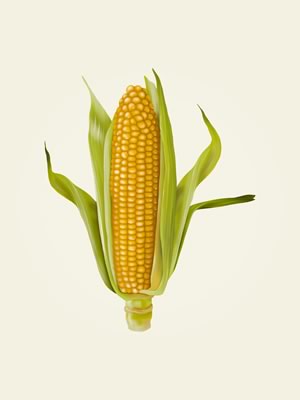 Corn
Corn
Corn, or maize, is the world’s number 1 crop. Two types of corn are grown in Ontario: sweet corn (think corn on the cob) and field corn. According to the Ontario agriculture ministry, field corn predominates and can be either fodder corn or grain corn. Fodder corn is used for animal feed and includes silage, corn that is stored in a silo and used as winter animal feed. Grain corn is also used for animal feed, as well as for making industrial products such as ethanol and some food products such as corn syrup.
Until about 50 years ago, the corn grown in this country was earmarked primarily for animal fodder. But this has changed. Statistics Canada notes that consumer demand is driving more farmers to produce organically grown sweet corn for human consumption, and varieties have been bred to raise the sugar content, making corn even sweeter. The Canadian Encyclopedia notes that more than 2,500 supermarket products contain corn. And corn is also used as raw material for a vast array of industrial products, such as paper and insulation.
Brianne Curtis of Grain Farmers of Ontario says she’s often asked whether the corn growing in Headwaters fields is the corn we eat. “Ninety to 95 per cent of the corn in Dufferin is grain corn,” she says. “It’s not corn-on-the-cob corn.”
Like the grains listed so far, corn is a member of the Poaceae family (formerly the Gramineae family), though this tall grass is unique because each plant includes both male and female parts. The male part is the tassel at the top of the stem, while the female part is the cob wrapped in the leafy husk. Each tassel contains pollen, which it sheds to fertilize the silks, which become the kernels. Planted in spring, grain corn is harvested in late fall when it has a moisture content of about 25 per cent. Once harvested, the stalks may be plowed under or left in the field for cattle to graze on. Or a new crop may be planted between the rows of the previous year’s stalks.
The observant passerby will have noticed that corn fields often have small product markers posted at the ends of the rows. These are test fields. The markers indicate different varieties that will be evaluated for yield and other factors. In the past 70 years, breeding experimentation, mostly by seed companies, has transformed corn from a strictly fodder crop into a major commercial industry.
2020 fodder corn harvest (acres)
Dufferin 2,900
Peel 2,500
Wellington 18,000
Ontario 249,100
2020 grain corn harvest (acres)
Dufferin 23,200
Peel 14,100
Wellington 67,900
Ontario 2,140,000
Hay and pasture
Hay is a generic name for a variety of grasses and plants, including timothy, brome, alfalfa, clover and the like, which are cut when green, then sun-cured and stored as animal fodder. Hay that is a mixture of alfalfa and timothy is highly prized by livestock owners. Most alfalfa has distinctive small purple flowers that bloom in clusters, while a timothy head, which can be up to six inches long, is made up of small, tightly woven spikelets that have tiny flowers when mature.
Like the grass on our lawns, hay regrows after it is cut, and the number of times hay is cut depends on the needs of the user. Jon Blydorp, who grows hay and grain in Amaranth and Melancthon, says that in his experience, first-cut alfalfa–timothy hay is prized as horse feed, while the second cut is desired by dairy farmers. “Dairy producers cut a lot of hay in the last week of May and then about every 30 days thereafter,” he says. The lowest quality hay is used as fodder for beef cattle.
“Someone who keeps horses will choose the hay based on appearance,” says Blydorp. “They want it a nice green colour, mature, with a good-sized timothy head and no dust or mould which can make a horse sick.” Hay like this prevents a horse from gaining too much weight. While beef farmers want their animals to gain weight, girth is something most horse owners want to avoid, and given that the average horse may eat about half a small bale a day, the weight gain potential of their hay is an important consideration.
Every third or fourth spring, Blydorp reseeds his hay fields once they’re dry enough to plant the seed. “The more frequently you cut the hay, the more frequently you have to reseed the fields,” he says.
When cut, the hay is spread over the field to dry, which usually takes three or four days – and during this time farmers hope for sunny days. Hay baled damp can become mouldy and, worse, generate enough heat to spontaneously combust. Once the hay is dried, it can be baled in small or large “square” bales, actually rectangular, or in “round” bales, actually cylindrical. Small bales can be stored easily in barn lofts while large bales spoil less quickly outside and can be left there for winter feeding.
And a final note to the rural newbie: Never give yourself away by confusing hay and straw. Good hay retains a greenish colour and is food for livestock. Straw, the hollow dry stalks of grain, is golden and used for livestock bedding.
2020 hay harvest (acres)
Dufferin 23,108
Peel 12,062
Wellington 61,030
Ontario 1,435,300
White beans
Another local crop, though not a particularly abundant one, is white beans. “In Ontario white beans are navy beans, also known as white pea beans,” says Jennifer Mitchell, project manager for Ontario Bean Growers. “These make up the largest portion of the acres of dry beans.”
Though about nine types of beans are grown in Ontario, white bean crops are growing in popularity with the province’s farmers, so expect to see more of them in local fields. They take 65 to 90 days to mature and have large flat green leaves and small white flowers. The plants are harvested close to the ground and as cleanly as possible to avoid shaking the pods.
Dry beans, which have been packaged dry for sale in bags or rehydrated and cooked for sale in cans, are used in soups, stews and casseroles.
2020 dry white bean harvest (acres)
Dufferin 999
Peel 300
Wellington 2,099
Ontario 81,400
Some farmers in Headwaters also grow other crops such as rye, a wheat-like grass used to make bread and whisky; spelt, a predecessor of modern wheat; and buckwheat, whose distinctive white flowers are the source from which bees produce buckwheat honey.
This article first appeared in the summer 2000 issue of In The Hills. It has been revised and updated by Orangeville writer Dorothy Pedersen who wrote the original article 21 years ago.
Farm harvest statistics are courtesy of the Ontario Ministry of Agriculture, Food and Rural Affairs, with the exception of potato statistics which are courtesy of the Ontario Potato Board.
Editor’s Note: In the print edition of this story the labels on the illustrations of oats and wheat illustrations were transposed.
A word about genetic modification and hybridization
Both hybrids and genetically modified organisms, or GMOs, are created when plants are altered — and both processes involve changes in a plant’s genes. Traditional hybrids are created through a natural cross-pollination process, which can be helped along by humans. GMOs are created when humans insert genes into a plant’s seeds. These genes cause the plant to develop a desired trait that will, for example, improve yield or enable it to resist certain pesticides or diseases.
According to Stacey Edwards of the Ontario Ministry of Agriculture, Food and Rural Affairs, no genetically modified varieties of edible beans are available in Canada. Though genetically modified sweet corn is not uncommon, the acreage devoted to genetically modified sweet corn, silage corn and canola in Ontario is unknown. Statistics Canada reports that 86 per cent of grain corn and 75 per cent of soybeans grown in Ontario are genetically modified.
Related Stories

Farmers at the Table
Sep 24, 2021 | | FarmingThree Dufferin farmers sit down talk about what it means to be a modern farmer, the challenges they face and what they wish we knew about them.
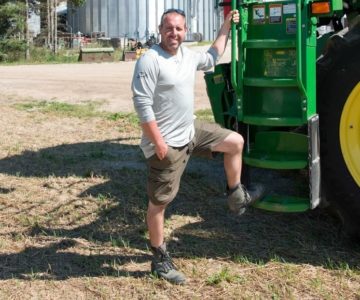
Meet the Farmers
Sep 24, 2021 | | FarmingBert Tupling, Mike Swidersky and Darryl Burnett criss-cross Dufferin County tending to wheat, barley, corn, potatoes, cattle, sheep and more.
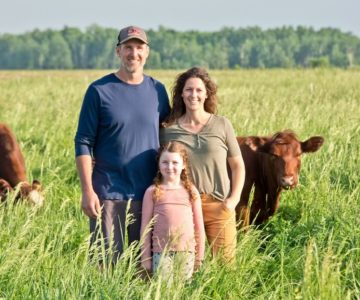
Regenerative Agriculture Puts the Soil First
Jun 22, 2021 | | FarmingHow cover crops, crop rotation and using livestock to fertilize fields puts local farmers on the front lines in reducing climate change.

The Boom in Local Food
Jun 25, 2020 | | FoodIn the dark cloud of the pandemic, a silver lining for small farmers.
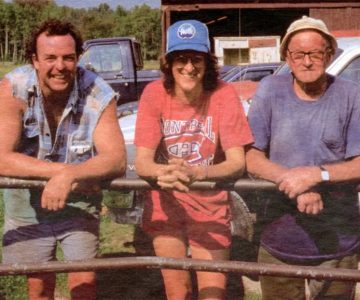
A Dairy Farmer’s Tale
Sep 15, 1995 | | FarmingHis Jersey cows have provided Art Bracken with a good life. And as the community changes around him, the daily routines on his Caledon farm remain the same.











Too bad there were not enough incentives from the government to encourage farmers to keep farming and thd next generation as well. Farms have been a part of our landscape for generations. The people that pioneered this vast land and worked hard to clear their land would not want to see their legacy dissappear. Long live the farmers, God bless you all and hopefully not give into urban growing spread.
Jeanne from Bolton on Sep 25, 2021 at 10:47 am |